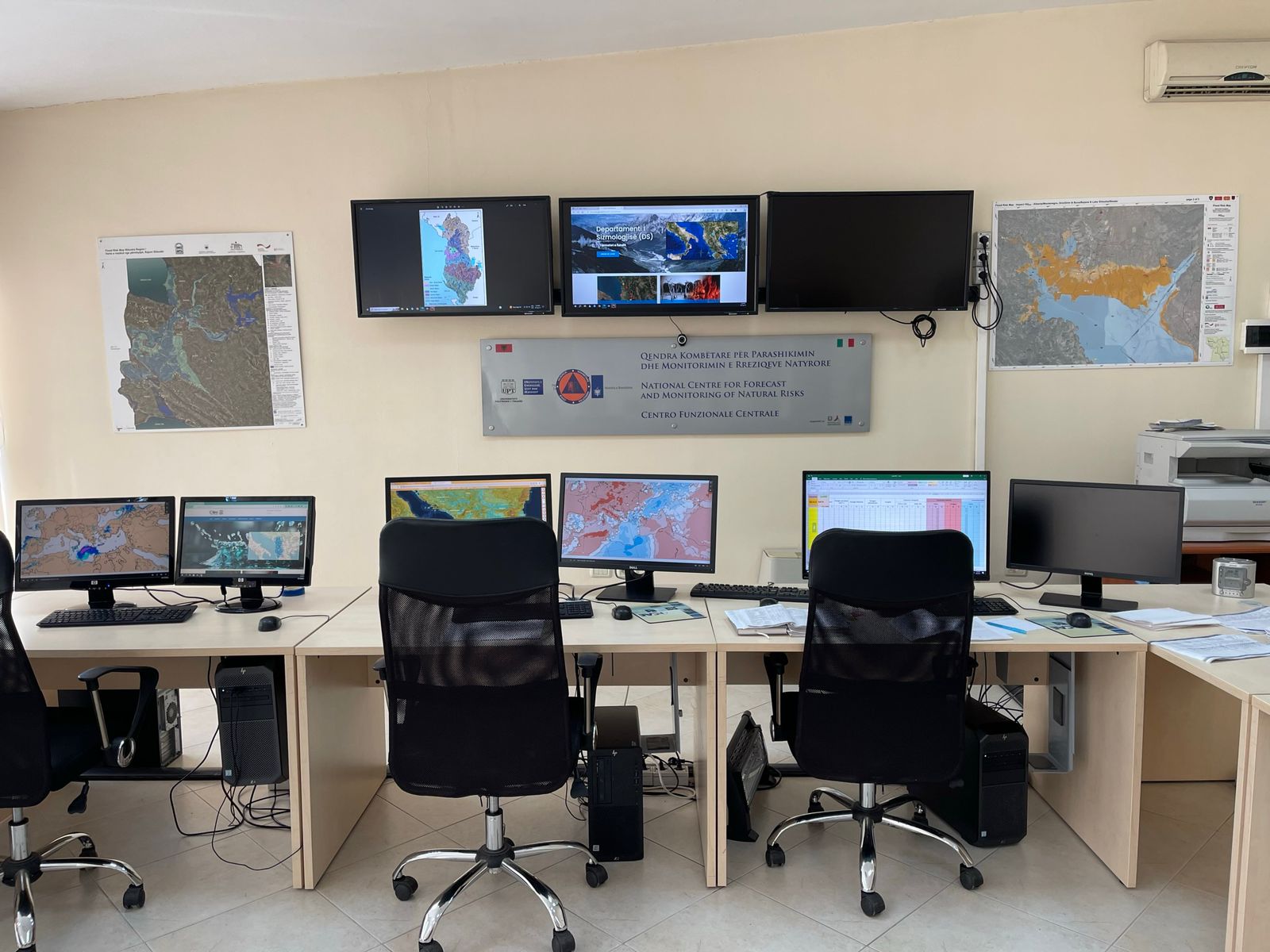Hydrologic & Meteorological Forecast
The National Center for Forecast and Monitoring of Natural Hazards (NCFMNH), a structure of the Institute of Geosciences (IGEO), aims to fulfill the operational tasks of monitoring, analysis, forecasting of hydro-meteorological phenomena and forest fires in the country. Informing authorities and the public in time in case of hydro-meteorological events and forest fires. Data archiving and documenting extreme events. Also supporting the research activities of the Department of Hydrology and Meteorology.

The monitoring and analysis activity of hydro-meteorological events and forest fires is based on:
-Monitoring of hydrological and meteorological data recorded in real time by automatic stations (SEBA and ETG stations) and manual ones.
-Use of mathematical models (meteorological and hydrological) available in IGEO to analyze the necessary parameters.
-Use of internationally certified models for forecasting weather, floods and forest fires (European Centre for Medium-Range Weather Forecasts (ECMWF), ICOsahedral Nonhydrostatic (ICON), Global Forecast System (GFS), Flash Flood Guidance System with Global Coverage (FFGS), European Flood Awareness System (EFAS), European Forest Fire Information System (EFFIS), etj.) to analyze the necessary parameters.
Daily Notification
In the framework of forecasting the expected extreme hydro-meteorological events, a daily bulletin "Bulletin of Natural Hazards" is compiled in NCFMNH. The bulletin is distributed to its recipients via email no later than 12:00 and announces the expected danger related to climatic phenomena (rainfall, temperatures, wind, etc.), floods and forest fires.
The forecast published in this bulletin extends over a time range of 36 hours starting from the moment of its distribution (12:00) for the current day until 24:00 of the next day.
The Bulletin of Natural Hazards shows in tabular form and through the map:
- Meteorological hazard, which includes information on expected rainfall
- Hydrological hazard which alerts about Flash Floods, Fluvial Floods
- Landslides
- Hazard from Forest Fires
The Bulletin shows in the form of a description the information on temperatures, precipitation, wind, and hydrological drought in cases where it is expected.
Notification in Cases When High Risk is expected
In case a high level of one of the Natural Hazards is foreseen, the bulletin is made two or three times a day, depending on the expected event.
In cases where high risk events are expected (Floods, Fires and High Temperatures, Frost and Snow, Storms, Strong Winds, etc.) a report is drafted which provides detailed information on the risk, possible magnitude, impact of probable and expected time and probable duration of the event. The report is drafted based on the expertise of the responsible academic staff. This detailed report is sent to the Heads of DH and DM Departments, and the Directorate of IGJEO.
With the approval of the Directorate of IGJEO and the Heads of the Departments DH and DM this report is sent to NACP. Depending on the situation, the report can be sent in parallel to NACP. Depending on the foreseen situation, the director of IGJEO decides on the meeting of the IGJEO Emergency Headquarters in cases when he deems it necessary. In case of termination of the anticipated event or in case of its non-occurrence, the activation of the notification will be closed with a second notification announcing the transition from the danger situation.
Data Archiving
Data archiving is a very important activity. This activity is based on:
Archiving of predicted hydrological and meteorological data. The data obtained from the forecast of precipitation, temperatures, wind, flows, ect., are saved in excel format.
Archiving of predicted and observed data on forest fires. Data obtained from the forecast of forest fires and data recorded by the National Civil Protection Agency.
Event Documentation
In cases of events such as: Floods, Fires, Frost and Snow, Storms, Strong Winds, etc. They are documented and archived. The document contains all the information collected (respectively for each event) by field observers, automatic stations, manual stations, information coming from NACP (National Agency for Civil Protection), information from the media, information extracted from the calculation models of NCFMNH , and by internationally recognized models.
